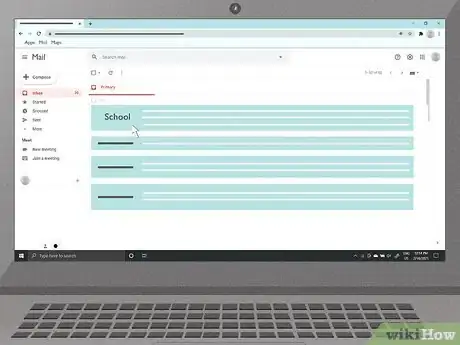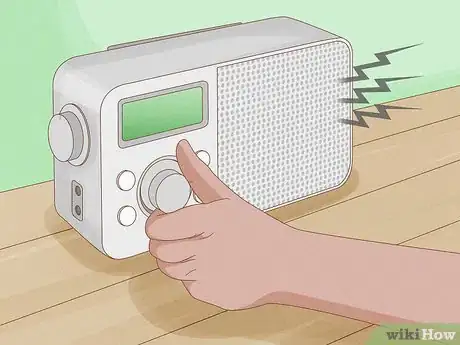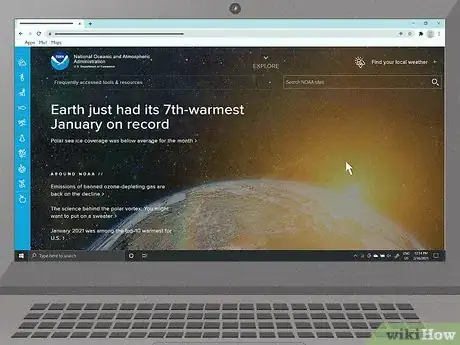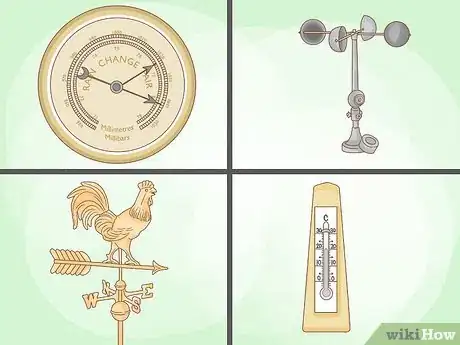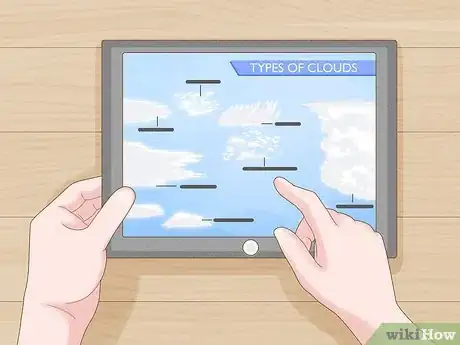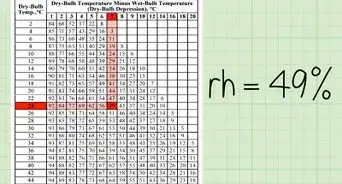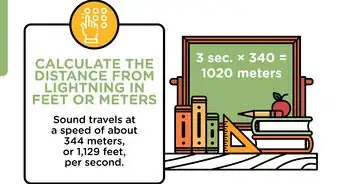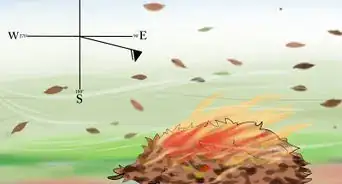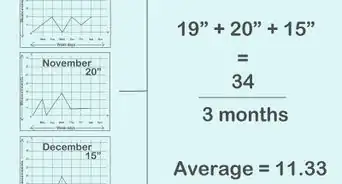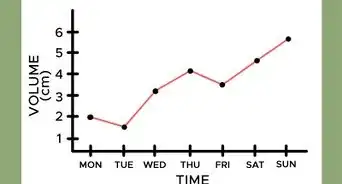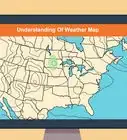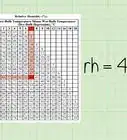This article was co-authored by wikiHow Staff. Our trained team of editors and researchers validate articles for accuracy and comprehensiveness. wikiHow's Content Management Team carefully monitors the work from our editorial staff to ensure that each article is backed by trusted research and meets our high quality standards.
There are 10 references cited in this article, which can be found at the bottom of the page.
This article has been viewed 77,339 times.
Learn more...
Snowfall can affect commutes, postpone events, and damage property. In order to plan ahead and minimize disruptions, it is important to know how to anticipate when and how much it will snow. Since weather conditions depend on complex environmental factors, accurate projections are difficult to make. Nevertheless, by checking dependable forecasts and learning how to read changing weather conditions, you can learn to anticipate snow reliably.
Steps
Checking Forecasts
-
1Watch a local news broadcast. For students or workers with a long daily commute, it can be important to anticipate snow at least a day in advance. Local news broadcasts typically include a weather report with a five-day outlook or more. Check local listings for broadcast times and channels.
- Weather forecasts are predictions and there is significant room for error.[1] As a general rule, predictions are most accurate within a range of two days and typically reliable as far in advance as seven to ten days.
-
2Check for cancellations. If your interest is primarily whether there will be a snow day, you should look specifically for closing announcements. Regardless of actual snowfall, most schools and organizations will not reverse a cancellation notice once it has been made.
- Check the phone or email that your school or employer uses to contact you. You can also check a local news station’s website for a list of cancellations. These are usually updated as soon as decisions are announced.
Advertisement -
3Listen to the radio. You can get weather forecasts as part of broader local news radio coverage. News radio is broadcast throughout the day with regular weather updates, so you will not need to wait for the specific broadcast times of televised news. If you do not know the frequency of a local news station, scan the dial or search a list of local station frequency numbers and programming format.
- The National Oceanic and Atmospheric Administration broadcasts weather forecasts and alerts all hours of the day through the NOAA Weather Radio All Hazards system. You will need a special receiver to pick up the frequency; look for radios with the Public Alert logo or the NOAA Weather Radio (NWR) All Hazards logo at an electronics store. Check the NOAA website for a list of nationwide frequencies.
-
4Check websites with weather forecasts. You can find national weather coverage online through the National Weather Service. The Weather Channel also provides national weather coverage and forecasts.[2] Typically, the site will recognize your general location. Search by zip code, city, or place name for a forecast in another region.
- The National Weather Service provides the data that most meteorologists use in making their predictions. Different meteorologists arrive at different forecasts by using different models.[3]
- Websites for broadcast news, like CNN and local news affiliates, typically provide weather forecasts on their websites as well. Each prediction may be different, so it may be worth checking multiple forecasts to establish the probability of snow.
-
5Download a weather app for your phone. You can receive regular weather updates by installing a weather forecast app such as Weather Underground, DarkSky, The Weather Channel, or RainAware on your phone. These apps will allow you regularly check updates to the forecast.
Making Informed Predictions
-
1Check weather records for trends. Weather conditions vary significantly from year to year, but recognizable patterns for given regions appear over time as well. If you are going to predict snowfall on your own, know the average temperatures and precipitation rates for your region.[4]
- The National Oceanic Atmospheric Administration provides searchable information regarding average temperature and precipitation by month and year for the continental United States, WeatherDB provides a searchable index of average snowfall in U.S. cities, and Weather Underground also offers searchable records of weather history).
-
2Develop a homemade weather station. You can predict weather through measurable changes in the atmosphere. With a barometer, an anemometer, a weather vane, a screened thermometer, and a rain gauge you can make reliable short-term predictions. Gathering your own data will allow you to refine general forecasts for greater local specificity.
- Learn how to set a barometer and how to read a weather map in order to track changing weather conditions for yourself.[5] Typically, falling atmospheric pressure signals coming precipitation. If air temperatures are right, precipitation will fall as snow (typically between -2° and 2°C or 28° and 35°F).
- You can purchase an all-in-one digital device that performs the functions of each of the instruments necessary for a functional weather station. Models can cost between $150 and $2,500 depending on quality and complexity.[6]
- You can build your own instruments from common items.[7]
-
3Identify cloud types. The appearance of clouds alone does not mean that there will be snowfall. Certain clouds, however, are more likely to bring snowfall than others. You can learn how to recognize clouds in order to anticipate precipitation.[8]
- Cirrus clouds typically are accompanied by fair weather, while stratus clouds can bring light precipitation and cumulus clouds can bring heavier precipitation.
-
4Use natural conditions to predict the weather. If you are hiking, you may need to predict weather without the tools to make measurements or access to reliable forecasts. Recognize the reliable predictions that can be made following directly observable trends.
- Learn dangerous weather patterns for the region in which you live or are traveling.
- Old sayings lack complexity, but can help you get a general sense for coming weather. Look to the eastern sky to see whether the air is dry: “Red sky at night, sailors delight. Red Sky in morning, sailors take warning.”[9] Or, gauge air pressure by noting how high geese fly: “If the goose honks high, fair weather. If the goose honks low, foul weather.”
References
- ↑ http://www.economist.com/blogs/economist-explains/2016/06/economist-explains-10
- ↑ https://weather.com/storms/winter
- ↑ https://www.weather.gov/
- ↑ https://www.noaa.gov/news-release/us-winter-outlook-warmer-drier-south-with-ongoing-la-nina
- ↑ http://nationalgeographic.org/encyclopedia/barometer/
- ↑ http://www.nytimes.com/2013/07/11/technology/personaltech/a-guide-to-personal-weather-stations.html?_r=0
- ↑ http://celebrating200years.noaa.gov/edufun/book/BuildyourownWeatherStation.pdf
- ↑ http://nationalgeographic.org/encyclopedia/cloud/
- ↑ https://www.loc.gov/everyday-mysteries/meteorology-climatology/item/is-the-old-adage-red-sky-at-night-sailors-delight-red-sky-in-morning-sailors-warning-true-or-is-it-just-an-old-wives-tale/

